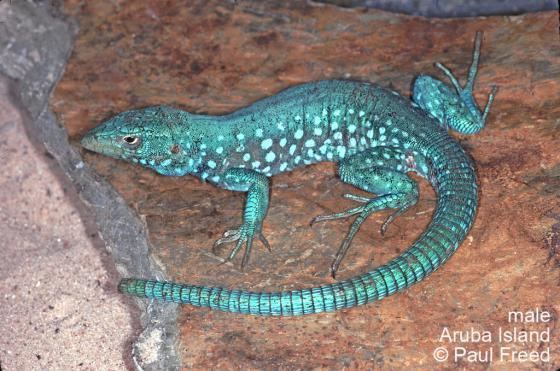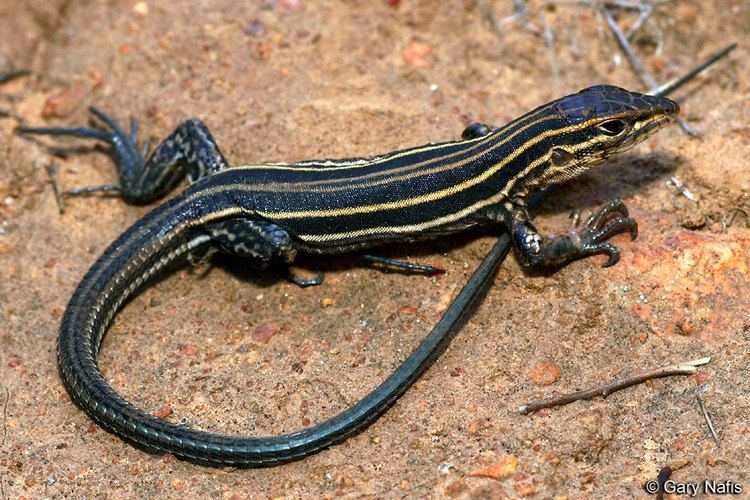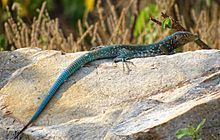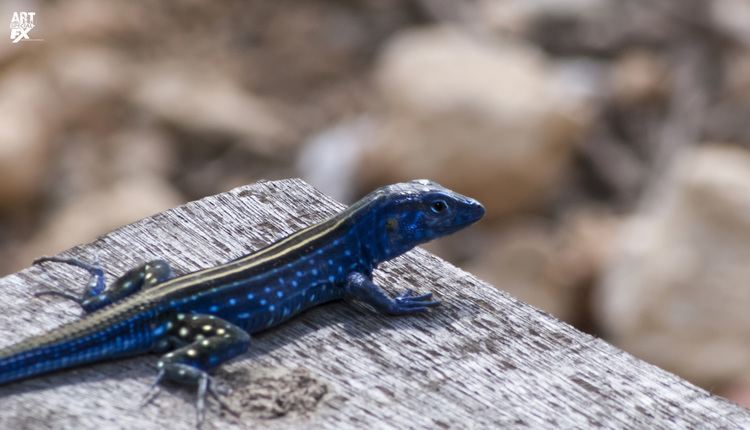Suborder Autarchoglossa Rank Genus | Subphylum Vertebrata Infraorder Scincomorpha Scientific name Cnemidophorus Phylum Chordata Order Scaled reptiles | |
 | ||
Lower classifications Western whiptail, Six‑lined racerunner, New Mexico whiptail, Rainbow whiptail, Little striped whiptail | ||
Whiptail lizard cnemidophorus lemniscatus
Cnemidophorus is a genus of lizards in the family Teiidae. Species in the genus Cnemidophorus are commonly referred to as whiptail lizards or racerunners. Note that the Reeder et al. (2002) re-examined the nomenclature for this genus and split it into the two genera Aspidoscelis and Cnemidophorus.
Contents
- Whiptail lizard cnemidophorus lemniscatus
- Pseudosexual behavior in the all female desert grasslands whiptail cnemidophorus uniparens
- Reproduction
- Species
- References

The name Cnemidophorus literally means "greave-wearing", from the Ancient Greek knēmido- (combining form of knēmis, "greave", a leg armor) and -phoros ("bearer").

Pseudosexual behavior in the all female desert grasslands whiptail cnemidophorus uniparens
Reproduction

In some of the Cnemidophorus species, there are no males, and they reproduce through parthenogenesis. This is well known in bees and aphids, but is very rare in vertebrates. Those species without males are now known to originate through hybridization, or interspecific breeding. Occasionally, a mating between a female of one species and a male of another produces a parthenogen, a female that is able to produce viable eggs that are genetically identical to her own cells. The lizards that hatch from these eggs are thus also parthenogens that can again produce identical eggs, resulting in an asexual, clonal population. Parthenogenetic species resulting from a single hybridization are diploid (that is, they have two sets of chromosomes just as sexual species do), but sometimes these females mate with other males, producing offspring which are triploid (that is, they have three sets of chromosomes, or 50% more than equivalent sexual species; see polyploidy). Over 30% of the Cnemidophorus genus are parthenogenic.
Species
The genus Cnemidophorus, sensu lato, contains the following species.





